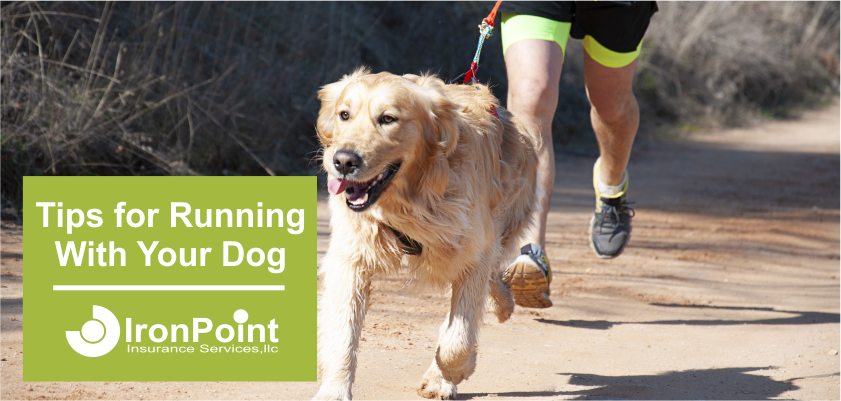Running with Your Dog: Tips for a Safe & Fun Workout

Running with your dog sounds like a dream: two endorphin junkies pounding the pavement, tails (and ponytails) flying in the wind. But before you grab the leash and start your own “Chariots of Fire” moment, make sure your dog is actually up for the challenge.
Because here’s the thing: running with your dog is amazing — but only if it’s safe, fun, and sustainable for both of you.
Can Your Dog Actually Run?
Not all dogs are built for the marathon lifestyle. Bulldogs, Pugs, and other short-snouted breeds (brachycephalics) can overheat and struggle to breathe. Dachshunds and Basset Hounds, with their short legs and long backs, face risks such as disc disease. Larger breeds may be prone to hip dysplasia and arthritis.
Even if your breed is a good runner, age and health matter. A quick look at your dog in human years can give you perspective: is your “puppy” actually a middle-aged jogger who prefers Netflix to sprints?
And don’t forget — dogs have personalities. Some love the challenge. Others would rather sniff every mailbox than break a sweat.
When in doubt, ask your vet before making your dog your new running buddy. A checkup (and even a smart policy like pet insurance to cover life’s surprises) is a solid move.
Leash Rules: Safety First
Once you’ve confirmed your dog can run, leash manners are next. Running with a dog that zigzags like a caffeinated squirrel is a recipe for disaster.
- Train your dog to stay on one side — always the same side.
- Use a harness rather than a collar to protect their neck.
- Keep them leashed unless you’re in a safe off-leash area and they respond reliably to commands.
- For runners, a slightly longer leash can give your dog room to move without tripping you.
Think of it this way: your leash should feel like teamwork, not a tug-of-war.
Start Small, Build Up
Even if you’re marathon-ready, your dog isn’t. Start with short intervals of jogging during walks. Gradually increase the running distance while decreasing walking time until running feels natural.
- Begin and end every run with walking.
- Use simple verbal cues like “let’s run” or “slow down.”
- Celebrate progress — consistency beats speed when training dogs.
Over time, your dog will learn the rhythm. You might even be amazed at how quickly they look forward to the routine.
Extra Tips for Running with Your Dog
Running with your dog can be the best part of your day, but a little prep goes a long way.
- Expect distractions. Birds, squirrels, and kids with ice cream cones will happen — have a plan.
- Schedule bathroom and sniff breaks — they’re runners, not robots.
- Hydrate both of you before, during, and after.
- Prefer dirt or grass trails — they’re easier on paws and joints.
- Slow down in the heat. Dogs struggle more with temperature regulation than humans.
- Watch for fatigue or injury cues: limping, slowing down, heavy panting — stop if you see them.
- And yes, always pick up after your dog. 🙂
The Bottom Line and the Bigger Picture
If you’re just getting started with pet ownership, our guide to bring a new pet home can help you plan for training, gear, and realistic routines — including running goals.
Running with your dog isn’t just exercise. It’s bonding, companionship, and pure joy. Pace yourself — and your pup — and you’ll both come out stronger and happier.
Since injuries or health surprises can pop up no matter how careful you are, protecting your four-legged running partner with pet insurance coverage is always a smart move. Not sure what it costs? You can get a quote online in minutes.
FAQs: Running with Your Dog
How old should my dog be before we start running?
Wait until growth plates are closed (often 12–18 months, depending on breed). Senior dogs can run too — just clear it with your vet and adjust pace and distance. A quick check of your dog in human years helps frame expectations.
How far can I run with my dog?
It depends on breed, age, conditioning, and weather. Start with short intervals and increase gradually. Many healthy adult dogs can build to 3–5 miles with proper training and hydration.
What gear do I need for running with my dog?
- Well-fitted harness and a run-friendly leash (waist leash optional).
- Water and a collapsible bowl.
- Paw protection for hot pavement or rough trails.
- ID tags and microchip info up to date.
Is it safe to run with my dog in the heat?
Be cautious above ~70°F, especially with humidity. Run early/late, choose shade, slow the pace, and take water breaks. Skip hot days for brachycephalic breeds.
What signs mean I should stop the run?
- Excessive panting, lagging behind, or stumbling.
- Limping, paw licking, or holding up a paw.
- Gums that look pale or very dark red (overheating warning).
If anything looks off, stop, cool down, and contact your vet. Having pet insurance can help with unexpected costs.
Let’s Get Started
Select the way you want to start your quote.
Let’s Get In Touch
Compare Quote Online
Let’s Get Started

Want to know if you can save on pet insurance? See for yourself. Start a quote today. Like it? You can buy online.
Call today and speak with a professional insurance agent.
1-877-334-7646






